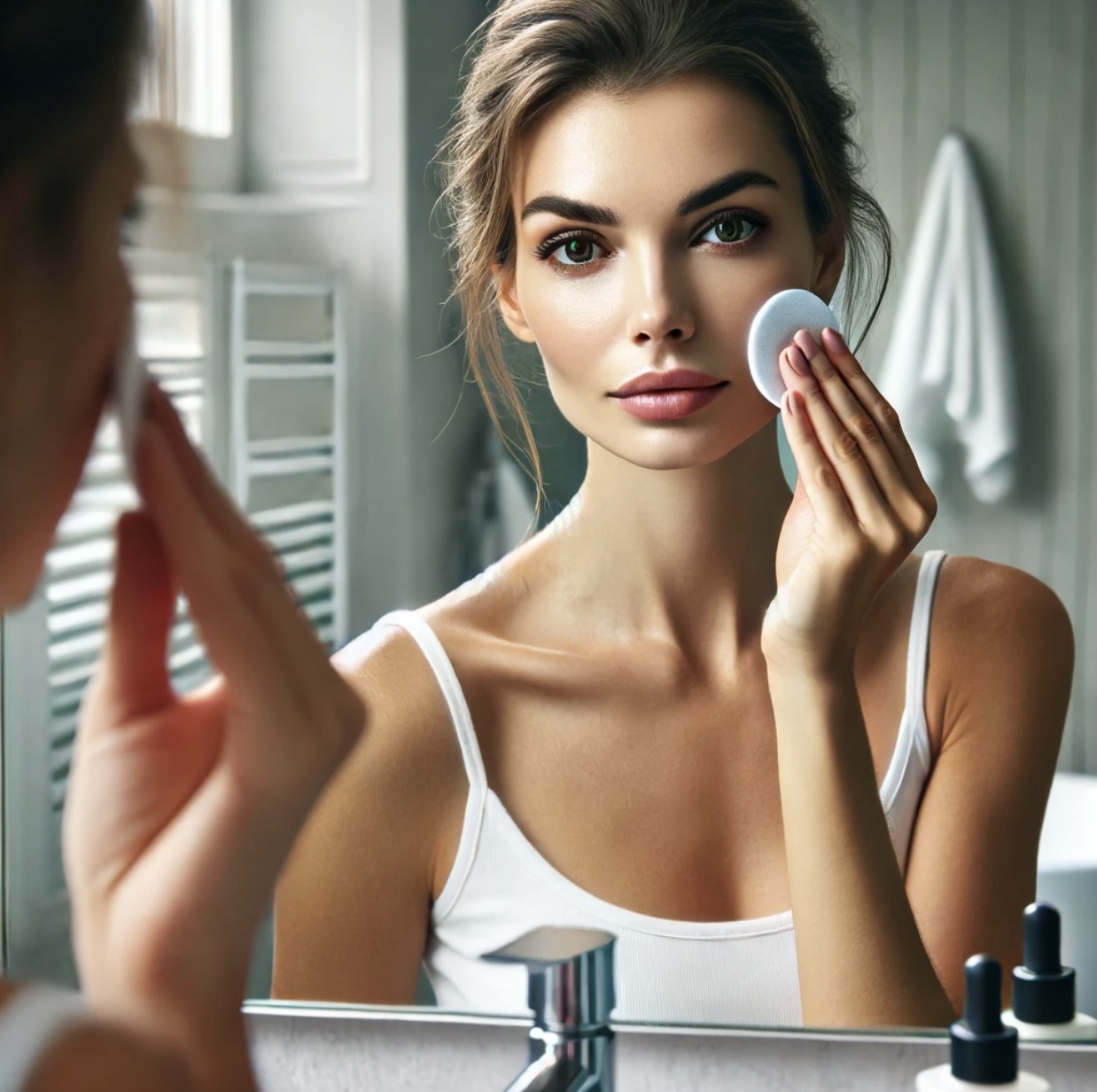I'm a participant in the Amazon Services LLC Associates Program, an affiliate advertising program designed to provide a means for me to earn fees by linking to Amazon.com and affiliated sites.
Knowing how to remove makeup effectively is crucial for maintaining healthy skin. While applying makeup can be an enjoyable part of your beauty routine, ensuring that it is properly removed at the end of the day is essential to prevent clogged pores, breakouts, and premature aging. In this guide, we’ll delve into the best practices for removing makeup, covering a range of methods and products suitable for different skin types and needs.
Speaking of having healthy skin, those of you with sensitive skin need the best makeup removers for your specific skin type, so be sure to pick those up.
Key Takeaways – How to Remove Makeup
- Proper makeup removal is essential for maintaining healthy skin and preventing breakouts.
- Various methods are available, including makeup remover wipes, micellar water, cleansing balms and oils, and double cleansing.
- Recent developments focus on innovative and sustainable makeup removal solutions.
- Experts recommend using gentle products to avoid irritation and maintain skin health.
Best Practices for Removing Makeup
Using Makeup Remover Wipes
Makeup remover wipes are a convenient option for quick and easy makeup removal. These pre-moistened towelettes are designed to dissolve makeup, dirt, and oil from the skin.
- How to Use: Simply wipe the face gently with the makeup remover wipe, focusing on areas with heavy makeup like the eyes and lips.
- Pros: Portable, quick, and easy to use.
- Cons: Can be drying if overused, not as thorough as other methods.
Micellar Water
Micellar water is a gentle, water-based cleanser that contains micelles, which attract and remove dirt and oil from the skin.
- How to Use: Apply micellar water to a cotton pad and swipe it over the face until all makeup is removed. No rinsing is required.
- Pros: Gentle, no need to rinse, suitable for sensitive skin.
- Cons: May require multiple cotton pads for heavy makeup.
Cleansing Balms and Oils
Cleansing balms and oils are effective for breaking down and removing even the most stubborn makeup, including waterproof formulas.
- How to Use: Apply a small amount of balm or oil to dry skin and massage in circular motions. Rinse with warm water or wipe away with a damp cloth.
- Pros: Highly effective, nourishing, suitable for all skin types.
- Cons: Can be messy, requires rinsing.
Double Cleansing
Double cleansing involves using an oil-based cleanser first to remove makeup, followed by a water-based cleanser to cleanse the skin.
- How to Use: Start with an oil-based cleanser to dissolve makeup, then follow with a gentle foaming cleanser to remove any remaining residue.
- Pros: Thorough cleansing, leaves skin feeling clean and fresh.
- Cons: Time-consuming, involves multiple steps.
Summary Table
| Method | How to Use | Pros | Cons |
|---|---|---|---|
| Makeup Remover Wipes | Wipe face gently | Portable, quick | Can be drying, not thorough |
| Micellar Water | Swipe with cotton pad | Gentle, no rinse needed | May require multiple pads |
| Cleansing Balms and Oils | Massage on dry skin, rinse | Highly effective, nourishing | Can be messy, requires rinsing |
| Double Cleansing | Oil-based cleanser, then water-based | Thorough, leaves skin clean | Time-consuming, multiple steps |
Recent Developments in Makeup Removal
Innovative Products
The beauty industry is constantly evolving, and recent years have seen the introduction of innovative makeup removal products. For instance, micellar water has gained popularity for its gentle yet effective cleansing properties. Brands are also developing makeup remover wipes infused with skincare ingredients like hyaluronic acid and aloe vera to provide additional benefits.
Sustainable Options
With the growing emphasis on sustainability, eco-friendly makeup removers are becoming more prevalent. Reusable makeup remover pads and cloths, such as those made from bamboo or microfiber, are excellent alternatives to disposable wipes. These products not only reduce waste but also offer gentle and effective makeup removal.
Expert Opinions and Recommendations
Top skincare experts and dermatologists emphasize the importance of thorough makeup removal as part of a healthy skincare routine. Dr. Whitney Bowe, a board-certified dermatologist, advises using gentle, non-irritating products to avoid damaging the skin barrier. La Roche-Posay collaborates with dermatologists to develop products that cater to sensitive skin, ensuring that makeup removal is both effective and gentle.
For more insights, you can explore these related articles: Mighty Patch vs Starface, Mighty Patch vs COSRX, and Mighty Patch vs Peace Out.
FAQ
1. What is the best method for removing waterproof makeup?
Using cleansing balms and oils is highly effective for removing waterproof makeup. These products break down the makeup, making it easy to wipe away.
2. Can micellar water be used on all skin types?
Yes, micellar water is suitable for all skin types, including sensitive skin. It gently cleanses without causing irritation.
3. Are makeup remover wipes bad for the skin?
Makeup remover wipes can be convenient, but overuse can lead to dryness and irritation. It’s best to use them occasionally and follow up with a proper cleansing routine.
4. What is double cleansing, and why is it recommended?
Double cleansing involves using an oil-based cleanser to remove makeup followed by a water-based cleanser to cleanse the skin. It ensures thorough removal of makeup and impurities.
5. How can I make my makeup removal routine more sustainable?
Opt for reusable makeup remover pads and cloths made from eco-friendly materials like bamboo or microfiber. These options reduce waste and are gentle on the skin.
Author
LuxuryShimmer
LuxuryShimmer is an expert in skincare with years of experience in the field. Dedicated to providing insightful and practical advice, LuxuryShimmer helps readers make informed decisions about their skincare routines.
